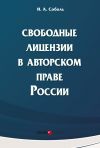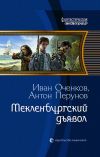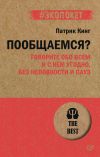Текст книги "Перевод и межкультурное взаимодействие"

Автор книги: Андрей Яковлев
Жанр: Учебная литература, Детские книги
сообщить о неприемлемом содержимом
Текущая страница: 11 (всего у книги 17 страниц) [доступный отрывок для чтения: 4 страниц]
Особое место в переводоведческой литературе отведено вопросам транскрипции и транслитерации в переводе. Говорится, например, что названия периодических изданий транскрибируются, названия учреждений могут и переводиться, а названия партий всегда переводятся. Существует, однако, немало исключений, и чаще всего все подобные имена собственные приходится заучивать. По сей день дискуссионным остаётся вопрос о наличии в русскоязычном тексте слов, написанных латиницей. Высказываются даже радикальные мнения, что в русском тексте всё должно быть по-русски, но не ясно тогда, что делать со словами типа IT, MBA, ad hoc и т.д. Потому переводчику приходится иногда принимать волевое решение о том, транскрибировать то или иное слово или выражение, транслитерировать или переводить его.
Упражнение 1. Переведите отрывок из научного текста, обращая внимание на использование транскрипции и/или транслитерации.
Сопоставление связей между словами в условиях различных культур
Как уже было отмечено выше, при отборе слов для экспериментального списка учитывалось наличие аналогичных материалов в ряде языков. Благодаря этому сопоставление результатов нашего эксперимента с имеющимися публикациями ассоциативных норм позволяет сделать некоторые предварительные замечания в отношении совпадения или расхождения показателей тесноты связей между словами в условиях различных культур.
Например, устойчивая для английского и французского языков ассоциация SPIDER – web нетипична ни для русского, ни для казахского языков. Так, русские испытуемые (Ии.) на слово ПАУК лишь в 8 % случаев дали ответ паутина, 31 % ответов представляет собой определения к слову ПАУК (например, мерзкий, противный, страшный). 3 % Ии. отнесли паука к классу насекомых, а 14 % назвали представителей различных видов насекомых, т.е. дали координированные ответы (например, муха, жук). Для казахов наиболее частым ответом на слово өрмекші явилось слово құмырсқа (муравей) – 31 %. В сочетании с названиями других насекомых, например бүйі (тарантул), шегіртке (саранча), шаян (скорпион), каракурт (каракурт), Ии. – казахи дали 53 % координированных ответов, в то время как 12 % отнесли паука к мелким животным (жэндiк). Слово тор (паутина) встретилось всего в 4 % случаев, 7 % ответов связаны с трудом ткача.
В польском языке на слово PAJAK (паук) только 17 % Ии. дали ответы со значением 'паутина': pajеczyna (паутина), siec (сеть, тенёта), nic (нить). Наиболее частым (26 % ответов) оказался ответ krzyzak (крестовик), называющий один из видов пауков. Около 7 % Ии. отнесли паука к классу насекомых (owad), 8 % дали координированные ответы: mucha (муха), коmаr (комар), robak (червяк). Следует отметить, что связь типа ПАУК – муха, ПАУК – комар можно рассматривать и как отношение «Деятель–Жертва». Около 13 % ответов составили атрибутивные ответы, преимущественно с ярко выраженным отрицательным отношением Ии. к характеризуемому ими объекту: obrzydlrwy (отвратительный), wstretny (омерзительный), brzydki (безобразный), okropny (ужасный). Некоторые парадигматические ответы оказались по своему значению очень близкими к атрибутивным ответам отрицательного характера, они являются названиями чувств, которые вызывает вид паука: wstret (отвращение), strach (страх, ужас), оbrzydzenie (отвращение, омерзение) и т.п.
Анализ рассмотренных данных приводит к общему выводу о том, что степень тесноты связи должна, очевидно, устанавливаться не вообще, безотносительно к тому или иному языку, а конкретно, с учётом специфики рассматриваемого языка. Только наличие установленных норм тесноты связи между определёнными категориями слов даст возможность судить о степени отклонения от этих норм в данном языке и приведёт к более объективным межъязыковым сопоставлениям. В то же время сопоставление количественных показателей тесноты связей между словами должно сопровождаться анализом лежащих за этими показателями моделей отношений между исходными словами и ассоциативными ответами Ии.
Сопоставление тесноты связей между словами в условиях различных культур требует тщательного анализа полученных экспериментальных данных и их обоснованной интерпретации, однако и предварительные результаты такого исследования представляются весьма интересными.
Задания
1. Проанализируйте и обсудите несколько вариантов перевода. Везде ли одинаково используется транскрипция и транслитерация?
2. Подумайте, везде ли в данном тексте есть необходимость транскрибировать некоторые слова? Обусловлено ли это чисто языковыми факторами?
Упражнение 2. Переведите отрывок из научного текста, обращая внимание на возможные случаи транскрипции или транслитерации.
Arabic Vowels Recognition by Modular Arithmetic and Wavelets using Neural Network
The recent rising increase of loudening activity in mobile communication domain draw new opportunities and shed some lights for applications of speech recognition including words and sentences. Text to speech or vice versa is incredibly critical issues in many computer applications. Where, English language has achieved vast success of the major part of interest. However, Arabic language speech recognition has been less attractive than English; because of its many nature difficulties, in term of, several alphabets forms and various dialects
There are 22 Arabic countries with around 350 millions Arabic speakers living in it or distributed all over the world. For this reason, Arabic language considered one of the most important and widely spoken languages in the world. Arabic is Semitic language that is characterized by the existence of particular consonants like pharyngeal, glottal and emphatic consonants. As well as Arabic language has some phonetics characteristics that are built around pattern roots (CVCVCV, CVCCVC, etc.).
The 28 letters can be used in a set of 90 additional combinations, shapes, and vowels. The 28 letters enclose consonants and long vowels such as ى and ٱ (both pronounced as /a:/), ي (pronounced as /i:/), and و (pronounced as /u:/). The short vowels and some other phonetic pronouncing like consonant doubling (shadda) are not introduced using letters directly, but by diacritics. The diacritics are short strokes, where each can be located above or below the consonant. Arabic discretization is interpreted by three groups: short vowels, doubled case endings form, and syllabification marks. First set, short vowels are written as symbols above or below the letter in the word using diacritics. We have short vowels: fatha: it pronounce as /a/ sound and is an slanted dash above the letter, damma: it pronounce as /u/ letter sound and has form of a comma above the letter and kasra: it pronounce as /i/ letter sound and is an oblique dash under the letter as tabulated in Table 1.
Table 1
Diacritics above or below consonant letter

Therefore, it is essential to realize that, what we usually denote to “Arabic” is not single linguistic variety; rather, it is a set of separate dialects and communities. Classical Arabic is an older and literary figure of the language, exemplified by the type of Arabic used in the Quran, the holly book for Islam. Modern Standard Arabic (MSA) is a version of Classical Arabic based on a modern vocabulary. MSA is a formal standard popular to all Arabic-speaking countries and communities. It is the language utilized in the newspapers, radio and TV, in official speeches, in courtrooms, and in any kind of formal communication.
Though, it is not utilized for everyday speech, informal communication, which is classically applied in one of the particular dialects. The dialects of Arabic may roughly speaking be divided into two sets: Western Arabic, which consists of the dialects spoken in Morocco, Algeria, Tunisia, and Libya, and Eastern Arabic, which may be further divided into Egyptian, Levantine, and Gulf Arabic countries. These different dialects differ significantly from each other and from Modern Standard Arabic. Differences influence all levels of language, i.e. pronunciation, phonology, vocabulary, morphology, and syntax.
Задание
Проанализируйте и обсудите несколько вариантов перевода. Подумайте, как поможет транскрипция (если поможет) конечному получателю лучше понять смысл текста?
Часть III: устный и письменный перевод
Продолжая в целом генеральную линию предыдущей части, третья часть данного пособия уделяет основное внимание устному переводу, но не оставляет совсем в стороне перевод письменных текстов.
Если в предыдущей части этого раздела вам приходилось лишь формировать умения устного последовательного перевода на текстовых отрывках, то теперь вам будет предложено оттачивать их на полноценных текстах, перевод которых зависит от широкого культурного контекста и ваших знаний в той области, к которой относится текст. Отработка навыков устного последовательного перевода посредством отрывков также присутствует в данной части, и отрывки здесь будут более объёмными, что направлено на тренировку памяти и формирование умений переводческой скорописи. При этом письменный перевод совсем не будет оставлен нами в стороне: тексты этой части потребуют более детальной проработки.
Урок 20Новый этап обучения переводу начнём с текстов, которые нами уже рассматривались, – публицистических. Как говорилось, они обладают особой спецификой и за счёт этого подходят для того, чтобы учиться выбору и нивелированию средств выражения различных нюансов смысла.
Упражнение 1. Переведите публицистический текст, постаравшись уложиться в 30–40 мин.
The Moral Instinct
Which of the following people would you say is the most admirable: Mother Teresa, Bill Gates or Norman Borlaug? And which do you think is the least admirable? For most people, it’s an easy question. Mother Teresa, famous for ministering to the poor in Calcutta, has been beatified by the Vatican, awarded the Nobel Peace Prize and ranked in an American poll as the most admired person of the 20th century. Bill Gates, infamous for giving us the Microsoft dancing paper clip and the blue screen of death, has been decapitated in effigy in “I Hate Gates” Web sites and hit with a pie in the face. As for Norman Borlaug… who the heck is Norman Borlaug?
Yet a deeper look might lead you to rethink your answers. Borlaug, father of the “Green Revolution” that used agricultural science to reduce world hunger, has been credited with saving a billion lives, more than anyone else in history. Gates, in deciding what to do with his fortune, crunched the numbers and determined that he could alleviate the most misery by fighting everyday scourges in the developing world like malaria, diarrhea and parasites. Mother Teresa, for her part, extolled the virtue of suffering and ran her well-financed missions accordingly: their sick patrons were offered plenty of prayer but harsh conditions, few analgesics and dangerously primitive medical care.
It’s not hard to see why the moral reputations of this trio should be so out of line with the good they have done. Mother Teresa was the very embodiment of saintliness: white-clad, sad-eyed, ascetic and often photographed with the wretched of the earth. Gates is a nerd’s nerd and the world’s richest man, as likely to enter heaven as the proverbial camel squeezing through the needle’s eye. And Borlaug, now 93, is an agronomist who has spent his life in labs and nonprofits, seldom walking onto the media stage, and hence into our consciousness, at all.
I doubt these examples will persuade anyone to favor Bill Gates over Mother Teresa for sainthood. But they show that our heads can be turned by an aura of sanctity, distracting us from a more objective reckoning of the actions that make people suffer or flourish. It seems we may all be vulnerable to moral illusions the ethical equivalent of the bending lines that trick the eye on cereal boxes and in psychology textbooks. Illusions are a favorite tool of perception scientists for exposing the workings of the five senses, and of philosophers for shaking people out of the naïve belief that our minds give us a transparent window onto the world (since if our eyes can be fooled by an illusion, why should we trust them at other times?). Today, a new field is using illusions to unmask a sixth sense, the moral sense. Moral intuitions are being drawn out of people in the lab, on Web sites and in brain scanners, and are being explained with tools from game theory, neuroscience and evolutionary biology.
Задание
Сравните и обсудите несколько вариантов перевода. Было ли вам труднее уложиться во временной лимит, чем это было в рамках урока 16?
Упражнение 2. Переведите публицистический текст, постаравшись уложиться в 60–80 мин.
[Статья опубликована в начале августа 2006 г. в научно-популярном издании.]
Manifold destiny. A legendary problem and the battle over who solved it
Grigory Perelman is indeed reclusive. He left his job as a researcher at the Steklov Institute of Mathematics, in St. Petersburg, last December; he has few friends; and he lives with his mother in a small apartment on the outskirts of the city. Although he had never granted an interview before, he was cordial and frank when we visited him, in late June, taking us on a long walking tour of the city. “I’m looking for some friends, and they don’t have to be mathematicians,” he said. The week before, Perelman had spent hours discussing the Poincaré conjecture with Sir John M. Ball, the fifty-eight-year-old president of the International Mathematical Union, the discipline’s influential professional association. At the end of May, a committee of nine prominent mathematicians had voted to award Perelman a Fields Medal for his work on the Poincaré, and Ball had gone to St. Petersburg to persuade him to accept the prize in a public ceremony at the I.M.U.’s quadrennial congress, in Madrid, on August 22nd.
Over a period of eight months, beginning in November, 2002, Perelman posted a proof of the Poincaré on the Internet in three installments. Like a sonnet or an aria, a mathematical proof has a distinct form and set of conventions. It begins with axioms, or accepted truths, and employs a series of logical statements to arrive at a conclusion. If the logic is deemed to be watertight, then the result is a theorem. Unlike proof in law or science, which is based on evidence and therefore subject to qualification and revision, a proof of a theorem is definitive. Judgments about the accuracy of a proof are mediated by peer-reviewed journals; to insure fairness, reviewers are supposed to be carefully chosen by journal editors, and the identity of a scholar whose paper is under consideration is kept secret. Publication implies that a proof is complete, correct, and original.
By these standards, Perelman’s proof was unorthodox. It was astonishingly brief for such an ambitious piece of work; logic sequences that could have been elaborated over many pages were often severely compressed. Moreover, the proof made no direct mention of the Poincaré and included many elegant results that were irrelevant to the central argument. But, four years later, at least two teams of experts had vetted the proof and had found no significant gaps or errors in it. A consensus was emerging in the math community: Perelman had solved the Poincaré.
After giving a series of lectures on the proof in the United States in 2003, Perelman returned to St. Petersburg. Since then, although he had continued to answer queries about it by e-mail, he had had minimal contact with colleagues and, for reasons no one understood, had not tried to publish it. Still, there was little doubt that Perelman, who turned forty on June 13th, deserved a Fields Medal. As Ball planned the I.M.U.’s 2006 congress, he began to conceive of it as a historic event. More than three thousand mathematicians would be attending, and King Juan Carlos of Spain had agreed to preside over the awards ceremony. The I.M.U.’s newsletter predicted that the congress would be remembered as “the occasion when this conjecture became a theorem.” Ball, determined to make sure that Perelman would be there, decided to go to St. Petersburg.
Задание
Проанализируйте и обсудите несколько вариантов перевода. Везде ли удалось обойтись без смысловых потерь и каким образом таких потерь можно избежать?
Урок 21Исследователь французского языка В.Г. Гак в одной из своих книг высказывал мысли, относящиеся не только к русскому и французскому языку, но и к переводу в целом. Русскому языку сравнительно просто выражать различные оттенки значения благодаря наличию множества продуктивных суффиксов субъективной оценки (уменьшительно-ласкательных, уничижительных и т.п.). Но не только морфологические, но и собственно лексические средства выражения экспрессии следует использовать переводчику; например, знаменитый (или даже именитый) имеет положительный оттенок, известный – нейтральное слово, пресловутый – слово с отрицательным оттенком значения [Гак 2010: 99].
Сравните также следующие пары слов: тишина – тишь, бросаться в сторону – шарахаться, глупость – неразумие, бежать – нестись, усилия – потуги, полон – преисполнен; второе слово каждой пары намного «живописнее» первого. И одна из труднейших задач переводчика состоит в том, чтобы подобрать слова, подобные вторым из приведённых пар, которых часто нет в словарях, но без которых русский перевод утратит свою выразительность и превратится в бесплотный скелет, не способный отобразить всю глубину смысла [Там же: 101]. И такие средства выражения экспрессии характерны далеко не только для художественных и публицистических текстов.
Упражнение 1. Переведите текст, стараясь тщательно подбирать слова и выражения, наиболее подходящие для его стиля и тематики.
The Guardian view on Angelina Jolie: star attraction
Editorial
Without Angelina Jolie… representatives of 140 countries would not be gathering in London to try to make a difference
Angelina Jolie, who is co-hosting the conference on ending sexual violence in conflict that opens today in London, is a highly regarded, very highly paid, Oscar-winning film actor with a burgeoning career as a director. She is also hyper-beautiful and – killer blow – half of a celebrity couple. To some people that excludes her from doing pretty well anything that might be described as worthwhile, like being a champion of the millions of women who have been raped, mutilated and abused, the casual collateral of too many wars.
The writer Paul Theroux accuses her and people like her of seeking “a landscape on which [they] can sketch a new personality”. On these very pages, she has been accused of vanity and hypocrisy. The cult of celebrity, this narrative implies, is trivial and the people on whom it is centred are trivial too. They cannot, therefore, engage with the serious except as a tawdry act of self-promotion that ends up trivialising things that actually matter. This is an absurd generalisation that damages the many well-intentioned efforts of famous people and belittles the energy, compassion and commitment that have distinguished Angelina Jolie’s campaign.
As T.S. Eliot put it, to do the right deed for the wrong reason raises an interesting moral question. But if even the fleeting attention of a star like Madonna to, say, extreme poverty in Africa can inspire more people to act to alleviate it, then it is hard to condemn merely because some of the glow of philanthropy will benefit her. There may be an argument, too, about celebrity over-simplifying complex issues. There may be a debate about the value of particular campaigns. But not, surely, about the need for attention in the first place.
Angelina Jolie brings much more than glamour to this week’s conference. She has taken a profound interest in the impunity of the men who rape women and children – and boys and men – as a weapon of war. Her study of the experience of Muslim women in Bosnia, raped repeatedly by Serb soldiers in a determined effort to impregnate them with “Christian” babies, led to her directoral debut, In the Land of Blood and Honey, which was described by the Guardian’s reviewer as “born out of scrupulous research and deeply held conviction”.
Plenty of controversy surrounds the high ambition of the London conference. There are charges for the co-host William Hague to answer about Britain’s laggardly approach to women seeking refuge here who have been victims of sexual violence in conflict. But what is not in doubt is that without the commitment of Angelina Jolie and her determination to find a framework in which justice for the victims becomes at least possible, representatives of 140 countries would not be gathering in London to try to make a difference.
Задание
Сравните несколько вариантов перевода. В каком (каких) из них имеются слова и выражения, более «живописные», чем выбранные вами?
Упражнение 2. Переведите текст, стараясь тщательно подобрать каждое слово на основе контекста и прагматики.
Useless Creatures
This article contains no useful information. Zero. Nada. Nothing. If usefulness is your criterion for reading, thank you very much for your time and goodbye, we have nothing more to say. The truth is that I am bored to tears by usefulness. I am bored, more precisely, of pretending usefulness is the thing that really matters.
I mostly write about wildlife. So here is how it typically happens for me: A study comes out indicating that species x, y and z are in imminent danger of extinction, or that some major bioregion of the planet is being sucked down into the abyss. And it’s my job to convince people that they should care, even as they are racing to catch the 7:10 train, or wondering if they’ll be able to pay this month’s (or last month’s) rent.
My usual strategy is to trot out a list of ways even the most obscure species can prove unexpectedly, yes, useful.
Every time I begin this line of argument, though, I get the queasy feeling that I am perpetuating a fallacy. It’s not that I’m telling lies; these examples are entirely real. But given, for instance, that three-quarters of our farm crops depend on insect pollinators, or that more than 2.6 billion people rely directly on seafood for protein, it seems a little obvious to be reminding people that wildlife can be useful, or, more to the point, that human survival depends on wildlife. Without saying so out loud, the argument also implies that animals matter only because they benefit humans, or because just possibly, at some unknowable point in the future, they might benefit humans.
You don’t have to look too far to see how silly this can get. In truth, I don’t have to look at all, because university press offices fill my inbox with examples every day: The Harvard scientists who hope their study of cuttlefish skin will “inspire improved protective camouflage for soldiers on the battlefield.” The Berkeley team that thinks studying the genetics of blubber-eating polar bears could help us learn to live with our bacon-wrapped, wide-load lifestyle. And the wonderful folks at Nanyang Technological University, in Singapore, who believe “Squid sucker ring teeth material could aid reconstructive surgery, serve as eco-packaging.” (And you thought they were good only for calamari.)
I don’t entirely blame the scientists. Their research often depends on taxpayer funding, and their dreams are haunted by the ghost of United States Senator William Proxmire’s Golden Fleece Award. That award garnered headlines by ridiculing outlandish-seeming items in the federal budget, and animal behavior studies were a juicy target. So now people doing that kind of research all feel obliged to imply that they are two steps away from a cure for the common cold. No basic research here, Senator, sir, no idle curiosity.
Improbably, wildlife conservationists now also often hear the call of the useful. Along with a large contingent of eco-finance bureaucrats, they try to save threatened habitats by reminding nearby communities of all the benefits they derive from keeping these habitats intact. Forests, meadows and marshes prevent floods, supply clean water, provide habitat for species that pollinate crops, put oxygen into the atmosphere and take carbon out, and otherwise make themselves useful. In some cases, conservation groups or other interested parties actually put down cash for these ecosystem services – paying countries, for instance, to maintain forests as a form of carbon sequestration. The argument, in essence, is that we can persuade people to save nature by making it possible for them to sell it.
I understand the logic, or at least the desperation, that drives conservationists to this horrible idea. It may seem like the only way to keep what’s left of the natural world from being plowed under by unstoppable human expansion and by our insatiable appetite for what appears to be useful. But usefulness is precisely the argument other people put forward to justify destroying or displacing wildlife, and they generally bring a larger and more persuasive kind of green to the argument.
Finally, there is the unavoidable problem that most wildlife species – honey badgers, blobfish, blue-footed boobies, red-tailed hawks, monarch butterflies, hellbenders – are always going to be “useless,” or occasionally annoying, from a human perspective. And even when they do turn out, by some quirk, to be useful, that’s typically incidental to what makes them interesting. Cuttlefish do not fascinate because their skin may suggest new forms of military camouflage, but because of the fantastic light shows that sometimes play across their flanks. Spider web silk doesn’t intrigue because somebody can turn it into bandages, but because of the astonishing things spiders can do with it – stringing a line across a stream and running trotlines down the surface to catch water striders, for instance, or (in the case of the species named mastophora dizzydeani) flinging a ball of silk on a thread like a spitball to snag moths out of the air.
Wildlife is and should be useless in the same way art, music, poetry and even sports are useless. They are useless in the sense that they do nothing more than raise our spirits, make us laugh or cry, frighten, disturb and delight us. They connect us not just to what’s weird, different, other, but to a world where we humans do not matter nearly as much as we like to think.
And that should be enough.
Задание
Сравните несколько вариантов перевода. Есть ли в переводах ваших товарищей слова или выражения, подходящие больше, чем соответствующие слова и выражения вашего перевода? Обоснуйте выбранные вами средства перевода.
Нет, пожалуй, ни одного языка, в котором не находили бы то или иное выражение причинно-следственные отношения, которым, разумеется, говоря о русском и английском, в наибольшей степени соответствует синтаксис сложноподчинённого предложения. Однако распространены и иные конструкции, употребление которых обусловлено различными как языковыми (узус, стиль, контекст), так и неязыковыми факторами. Например: за это изобретение его повысили в должности, но не *из-за этого изобретения, *в силу этого изобретения; волею обстоятельств я опоздал, но не *волею недоразумения и т.д. Причина может быть внешней или внутренней, это может быть физическое явление или человек, само действие может быть осознанным и неосознанным и т.д. Подумайте, какие средства английского языка, кроме собственно сложноподчинённого предложения, могут выражать семантику причины и следствия.
С одной стороны, богатство средств выражения причинно-следственных отношений облегчает жизнь переводчику, с другой стороны, разнообразие ограничений, накладываемых на выражение таких отношений, заставляет переводчика быть внимательным при выборе средств перевода.
Упражнение 3. Выполните устный последовательный перевод или перевод с листа данных отрывков. Обратите внимание на то, какими средствами выражаются причинно-следственные отношения при их наличии в высказываниях. Сравните несколько вариантов перевода.
1. Мне казалось, она была сильно напугана. Только её лучший друг мог так зло пошутить. Она была готова расплакаться, однако в следующую секунду я засомневался: она трясётся в ужасе или от смеха?
2. Елена Вячеславовна Петрухина совсем недавно опубликовала статью «Объяснительная теория славянского глагольного вида», в которой представлена трёхуровневая концепция глагольного вида на материале русского и чешского языков. Как можно видеть из её статьи, она не поддерживает общепринятую теорию глагольного вида.
3. Он никогда не экономил на покупках. Сразу тратил всё, а потом оставался без гроша в кармане. Впрочем, жизнь заставляла его поступать так. Но в этот раз, я думаю, Джон купил такую дорогую машину не от большого ума, а от дурости.
4. Из нежелания беспокоить мать Павел ничего не сказал ей о предстоящем отъезде. И хотя он знал, что это решение может иметь серьёзные последствия, не было ничего, что заставило бы его передумать. Его отъезд мог многое изменить в его жизни в лучшую сторону, и окончательное решение было за ним.
5. A lot of parents believe that children’s communication with peers is not useful and even harmful. But the point is, some friends are really intelligent and they easily can teach your child right things. For example my friend made me read more.
6. Я вовсе не собирался проводить выходные в компании с пищевым отравлением, но кто же будет меня спрашивать? Ваня смеялся надо мной, тыкая на срок годности и отпуская шутки по поводу моей неграмотности. Для себя я решил, что больше не буду покупать йогурты. Ах да, ещё под влиянием друга я стал больше читать.
7. Джон купил такую дорогую машину не от большого ума, а от дурости. Это ведь не машина, это танк какой-то! Наверняка он просто хотел, чтобы мы позеленели от зависти. Ну, ничего, ещё посмотрим, кто кого.
8. There are lots of different causes of liver disease, including drinking alcohol to excess which causes ‘alcoholic liver disease’. All the researches show that the more alcohol you drink, the more likely you are to develop liver disease. Eventually complete restoration of the liver functions and general health will be expected in most cases, when appropriate treatment is applied.
9. Я устало глядел на ярко-красный закат и докуривал последнюю сигарету, обещая себе, что с завтрашнего дня обязательно брошу, как вдруг ко мне подошёл Павел и сказал, что по случаю юбилея факультета после конференции будет организован небольшой фуршет. Что ж, придётся позвонить брату и отменить встречу. Бросив сигарету, я поплёлся в зал, где очередной докладчик самозабвенно нёс какую-то чушь про обогащение представлений о биологической науке, которое происходит в результате собственных размышлений учащегося…









































